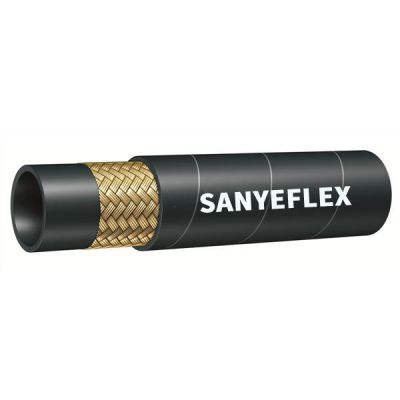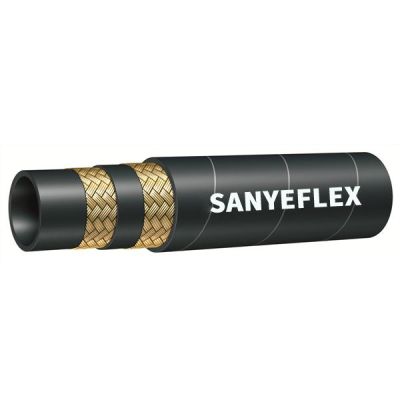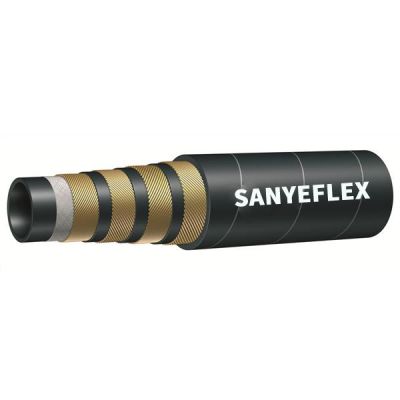06. 13, 2023
In the realm of dredging, one crucial component that plays a significant role in ensuring smooth operations is the dredge hose. Dredge hoses are essential for the transportation of sediments, slurry, and other materials during dredging activities. These heavy-duty hoses are specifically designed to withstand the rigorous demands of dredging projects and provide a reliable conduit for efficient material transfer. In this comprehensive guide, we delve into the intricacies of dredge hoses, their construction, functionalities, and their critical role in dredging operations.
A dredge hose is a specialized type of hose that connects the dredge vessel to the dredge head, facilitating the transport of materials such as sand, silt, gravel, and other sediments from the dredging site to the designated location. These hoses are typically made from a combination of reinforced materials such as rubber, synthetic compounds, or a combination of both to ensure durability and flexibility.
Construction and Design
Dredge hoses are designed with several key components to withstand the challenging conditions encountered during dredging operations. Let's explore the essential features that make up a dredge hose:
Inner Tube: The inner tube is the primary component that comes into contact with the material being transported. It is typically constructed from abrasion-resistant rubber or other specialized materials to withstand the erosive forces of the dredged materials.
Reinforcement Layers: To provide structural integrity and prevent the hose from collapsing under vacuum pressure or bursting under high working pressures, reinforcement layers are incorporated. These layers are usually made of high-strength materials such as synthetic fabrics, steel wires, or a combination of both.
Cover: The outer cover of a dredge hose serves as an additional layer of protection against external factors, including abrasion, UV radiation, and other environmental elements. It is designed to be resistant to wear and tear, ensuring the longevity of the hose.
Floatation Devices: In certain dredging applications where buoyancy is required, floatation devices can be attached to the dredge hose. These devices help maintain the desired position of the hose and prevent it from sinking or tangling, enabling efficient material transfer.
Dredge hoses offer numerous benefits that make them indispensable in the world of dredging. Here are some key advantages:
Flexibility and Maneuverability: Dredge hoses are highly flexible, allowing them to adapt to the contours of the dredging area, even in challenging terrains. This flexibility enhances maneuverability and facilitates efficient material transfer.
Durability and Longevity: Constructed with robust materials and designed to withstand harsh operating conditions, dredge hoses exhibit excellent durability and longevity. This ensures prolonged service life and minimizes downtime due to hose failures.
High Abrasion Resistance: The inner lining and cover of dredge hoses are specifically engineered to resist abrasion caused by the abrasive nature of the dredged materials. This feature prevents premature wear and tear, maintaining optimal performance throughout the dredging project.
Customizability: Dredge hoses can be tailored to suit the specific requirements of each dredging project. Customization options include varying hose diameters, lengths, and the incorporation of additional features such as wear indicators, monitoring systems, or anti-static properties.
To ensure the longevity and optimal performance of dredge hoses, regular maintenance is crucial. Here are some best practices to follow:
Inspection and Cleaning: Regularly inspect the dredge hose for any signs of wear, tear, or damage. Clean the inner lining to remove any residual sediments that may affect the hose's efficiency.
Storage and Handling: Properly store and handle dredge hoses to prevent unnecessary bending, kinking, or exposure to sharp objects. Follow the manufacturer's guidelines for storage conditions to maintain the hose's structural integrity.
Pressure and Temperature Monitoring: Monitor the working pressure and temperature of the dredge hose during operations. Avoid exceeding the recommended limits to prevent potential hose failures.
Replace Damaged Components: If any components of the dredge hose, such as the inner lining or reinforcement layers, are damaged, promptly replace them to avoid compromising the hose's performance.
Dredge hoses are essential components that contribute to the success of dredging operations worldwide. Their robust construction, flexibility, and durability ensure efficient material transfer, enabling the completion of large-scale projects. By understanding the intricacies of dredge hoses and following proper maintenance practices, dredging professionals can optimize their operations and achieve superior results. We are a dredge hose supplier. If you are interested in our products, please contact us now!
Nuestro Cliente
Teléfono: +86 400 0318 111
Correo electrónico: admin@sanyeflex.com
Agregar: #218 Zhongke Street, zona de alta tecnología, ciudad de Hengshui, provincia de Hebei, China. 053099


